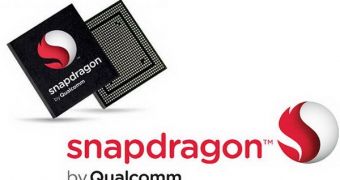The Snapdragon chipset line may have once been mostly restricted to phones and tablets, but that is history now, especially since the S4 generation has come forth.
Qualcomm's Snapdragon S4 series of ARM-based processors is composed of four different chips: S4 Prime, S4 Pro, S4 Plus and S4 Play.
The last two were envisioned specifically for 3G and 4G-enabled, high-volume phones and slates, so we will cover them elsewhere.
Here we will focus on the Snapdragon S4 Prime and S4 Pro, which mark another step forward for the ARM architecture's slow incursion into the non-mobile market.
ARM Holdings has been vying for a foothold on the PC and non-portable consumer electronics front for years. The ARMv7-based Prime and Pro don't contribute to the first goal (PCs), but they do help with the second.
Snapdragon S4 Prime is an HDTV chip, equipped with four Krait microprocessors running at 1.5 GHz. It also integrates the Adreno 320 IGP (integrated graphics processor).
We have no doubts that some S4 Prime-powered Smart TVs will appear at Computex 2012, or soon afterwards, complete with web browsing, on-board widgets/applications, etc.
The other Qualcomm chip, Snapdragon S4 Pro, will enable next-generation tablets with high-resolution displays. The press release mentions the existence of the same Adreno 320 GPU as before, but does not say much else, spec-wise.
We suspect the architecture is not that different among the four chips, so we are probably looking at a similar quad-core Krait design.
What Qualcomm did make a point of stating that the S4 Pro could make it easy to implement high-tier components like light-field cameras on mobile devices. The Adreno 320, being a highly programmable GPU, would supposedly allow for realistic enough 3D graphics effects, hardware acceleration and advanced rendering features (instancing, multiple render targets, occlusion queries, etc.).
Stay tuned for reports on consumer electronics devices and Windows RT prototypes powered by Qualcomm S4.

 14 DAY TRIAL //
14 DAY TRIAL //